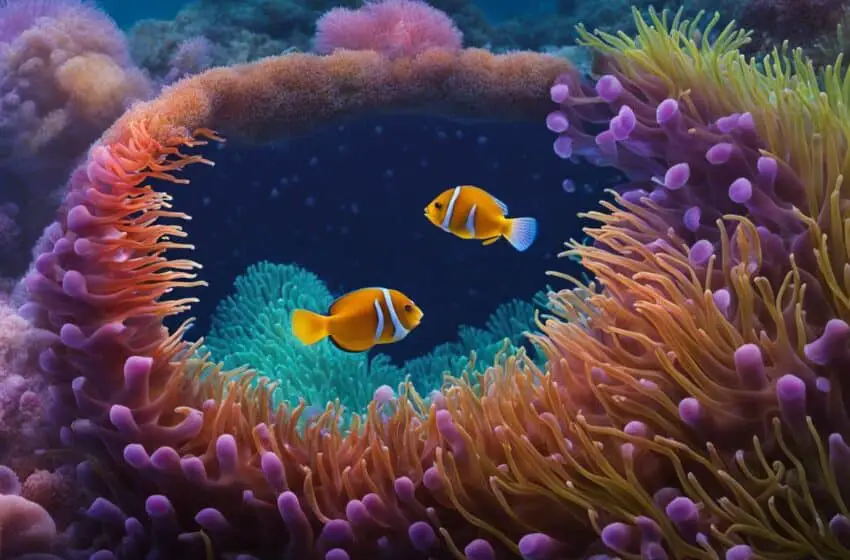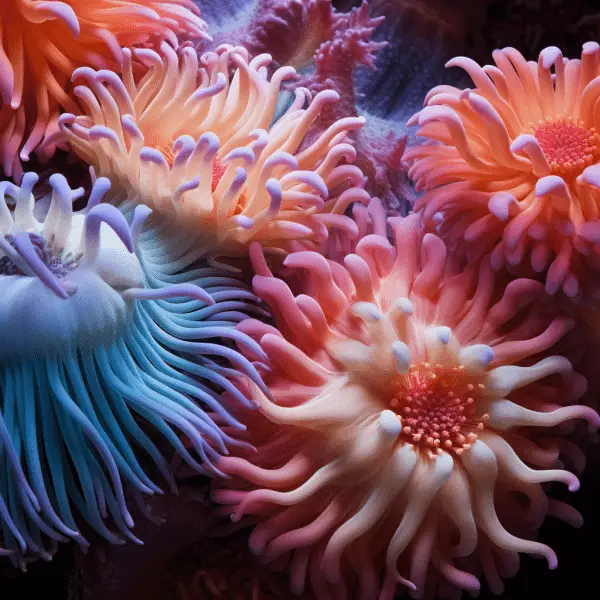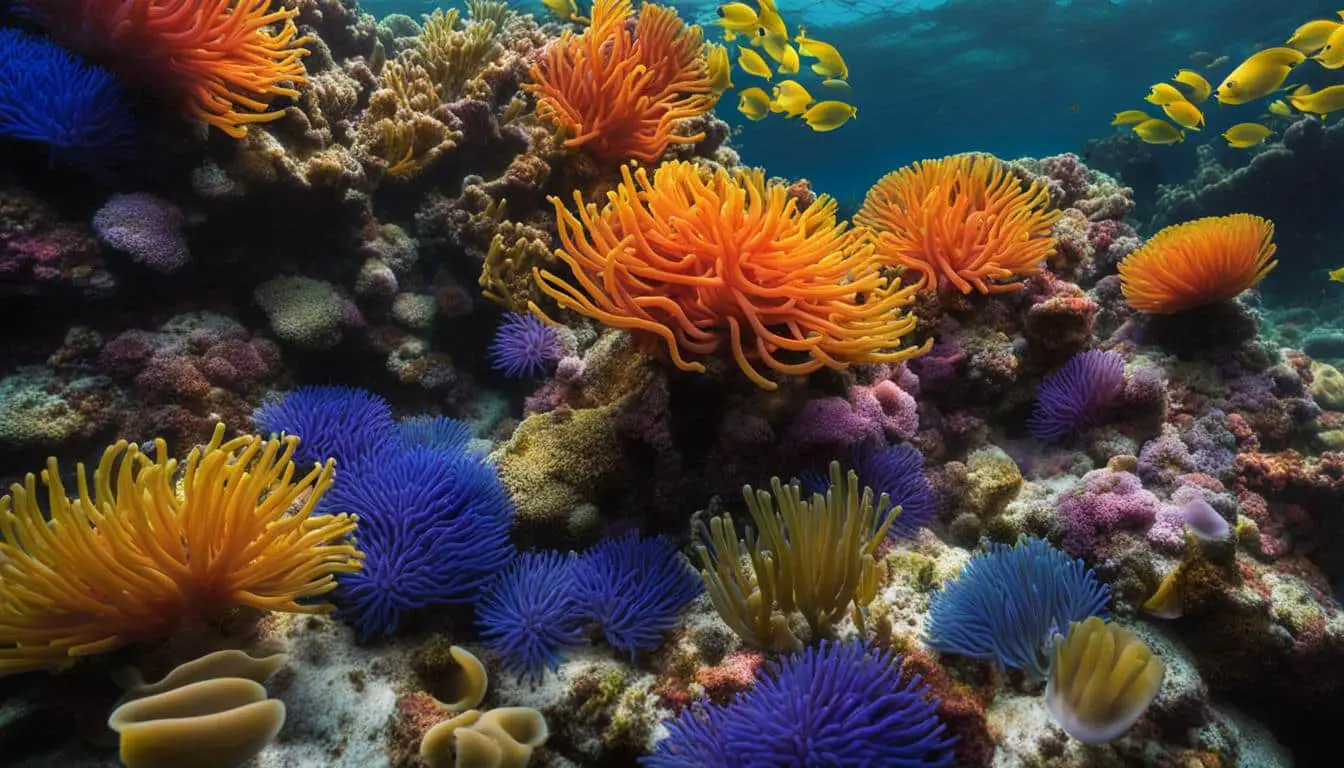Unveiling The Intricacies Of Sea Anemone Reproduction

Sea anemones have long intrigued scientists with their diverse reproductive strategies. In this comprehensive study, we delve into the reproduction methods of sea anemones, shedding light on their unique reproductive strategies and breeding techniques.
Key Takeaways:
- Sea anemones exhibit both sexual and asexual reproduction methods.
- Recent genetic evidence suggests that asexual reproduction, specifically fragmentation via budding, may occur in some sea anemone species.
- Understanding sea anemone reproduction is crucial for comprehending their ecological significance in marine ecosystems.
- Reproductive strategies contribute to population dynamics, evolutionary adaptations, and ecological interactions of sea anemones.
- Further research is needed to explore the prevalence and mechanisms of asexual reproduction in sea anemones.
The Biological Significance of Sea Anemone Reproduction Methods

Sea anemones are fascinating marine invertebrates that play a crucial role in the ecological balance of marine ecosystems. Understanding their reproduction methods is essential for comprehending their biological significance and the dynamics of their populations.
Asexual reproduction in sea anemones involves various processes such as pedal laceration, binary fission, longitudinal fission, and budding. These modes of reproduction can lead to the formation of clonal aggregations, contributing to the population dynamics of sea anemones. In contrast, sexual reproduction involves the release of gametes and subsequent fertilization, leading to the development of larvae. Sea anemones exhibit a range of reproductive cycles, including annual spawning behaviors and varied larval development strategies.
“The ability of sea anemones to reproduce both sexually and asexually provides them with significant advantages in terms of adaptation and survival,” says marine biologist Dr. Jennifer Miller.
“Asexual reproduction allows sea anemones to rapidly colonize new areas and form clonal aggregations, thereby increasing their abundance and distribution. Sexual reproduction, on the other hand, ensures genetic variability and maintains healthy populations within the ecosystem. Understanding these reproductive strategies not only expands our knowledge of marine invertebrate biology but also provides valuable insights into the complex interactions within marine ecosystems.”
The Significance of Sea Anemone Reproduction in Ecosystem Functioning
Sea anemone reproduction has broader implications for ecosystem functioning. Their role as primary producers through photosynthesis and as habitat providers for other organisms highlights the significance of their reproductive methods in maintaining biodiversity. By studying sea anemone reproduction, scientists can gain insights into the connectivity and dispersal of species in marine environments, as well as the impact of environmental stressors on their reproductive processes.

| Reproduction Method | Advantages | Disadvantages |
|---|---|---|
| Asexual | 1. Rapid colonization and clonal aggregation 2. Increased abundance and distribution 3. Minimal energy expenditure | 1. Reduced genetic variability 2. Vulnerability to environmental changes |
| Sexual | 1. Genetic variability and adaptation 2. Maintenance of healthy populations 3. Enhanced resilience to environmental challenges | 1. Energy-intensive process 2. Limited dispersal of offspring |
Further research is needed to explore the genetic and molecular mechanisms underlying sea anemone reproduction, as well as the impacts of environmental stressors on their reproductive processes. This knowledge can inform conservation strategies and help protect these ecologically important organisms and their associated symbiotic relationships. By unraveling the complexities of sea anemone reproduction, scientists can contribute to a deeper understanding of marine invertebrate biology and ecosystem functioning.
Conservation Implications and Future Research Directions
Investigating sea anemone reproduction methods not only enhances our understanding of their biology but also has important implications for conservation efforts. Reproductive behaviors such as spawning and gamete release are critical for maintaining sustainable populations of sea anemones.
By studying sea anemone spawning behavior, we can identify the specific environmental cues and triggers that initiate reproductive events. Understanding these factors can help us develop effective conservation strategies to protect their breeding habitats and ensure successful reproduction. It is crucial to maintain suitable conditions for gamete release and fertilization, as disruptions in these processes can have negative impacts on population dynamics and genetic diversity.
Furthermore, investigating sea anemone larval development provides insights into their dispersal and connectivity. By studying the mechanisms underlying larval settlement and metamorphosis, we can better understand the factors that influence their recruitment into new habitats. This knowledge is vital for managing marine protected areas and designing networks of marine reserves to foster population connectivity and resilience.
In order to develop comprehensive conservation plans for sea anemones, future research should also focus on understanding the impacts of environmental stressors on their reproductive processes. This includes investigating the effects of temperature fluctuations, ocean acidification, pollution, and habitat degradation. By identifying and mitigating these threats, we can safeguard these ecologically important organisms and their associated symbiotic relationships.
Conclusion
As we unravel the complexities of sea anemone reproduction, we not only contribute to our understanding of marine invertebrate biology but also pave the way for effective conservation measures. By protecting their breeding habitats, ensuring successful reproduction, and safeguarding their larval dispersal and connectivity, we can support the long-term survival of sea anemones and the ecosystems they inhabit. Through ongoing research and conservation efforts, we can strive to maintain the delicate balance of our marine environments and preserve the biodiversity that they harbor.
FAQ
What are the different modes of reproduction in sea anemones?
Sea anemones can reproduce asexually through processes such as pedal laceration, binary fission, longitudinal fission, and budding. They can also reproduce sexually through the release of gametes and subsequent fertilization.
How do sea anemones contribute to population dynamics through asexual reproduction?
Asexual reproduction in sea anemones can lead to the formation of clonal aggregations, which play a role in population dynamics.
What are the reproductive cycles and larval development strategies of sea anemones?
Sea anemones exhibit a range of reproductive cycles, including annual spawning behavior, and employ various larval development strategies.
Why is studying sea anemone reproduction important for conservation efforts?
Understanding sea anemone reproductive behaviors such as spawning and gamete release is crucial for maintaining sustainable populations and preserving their ecological significance.
What should future research on sea anemone reproduction focus on?
Future research should explore the genetic and molecular mechanisms underlying sea anemone reproduction, as well as the impacts of environmental stressors on their reproductive processes.



